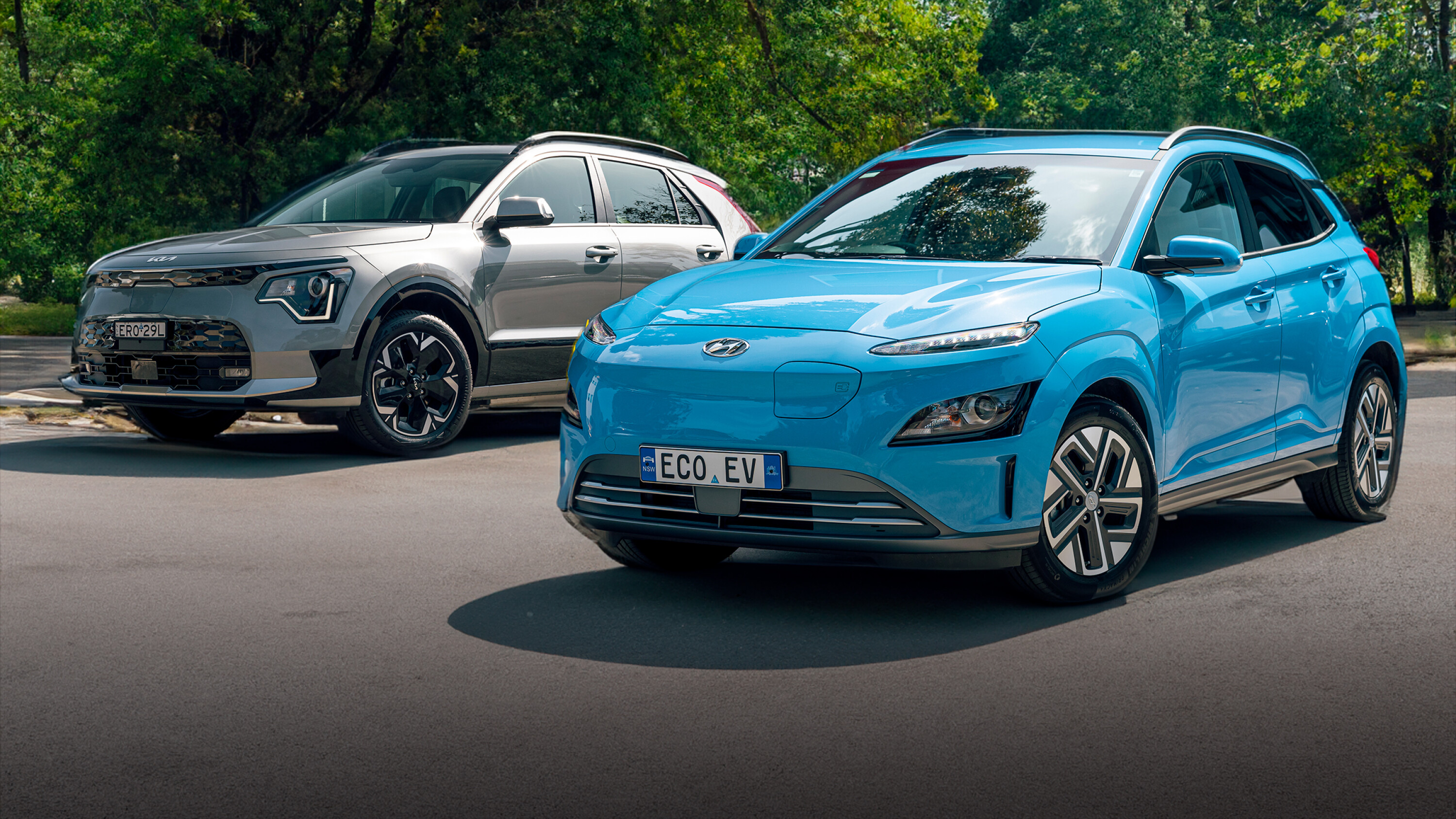
Kia’s Wheels 2022 Car of the Year win with the EV6 proved the Korean brand has the capability to take the electric car fight to Tesla, but can that form cascade down to its smaller offering?
Kia’s second-generation Niro arrived in Australia a little over a year since the original made its belated introduction here in mid-2021.
It remains on a platform set up for a mix of classic combustion and futuristic electrification, with the EV sitting above a hybrid Niro.
Hyundai’s platform twin to the Niro, the Ioniq, has now been discontinued, though Kia’s affiliate partner still has the battery-only version of the Kona to give us two electric compact SUVs.
The current Kona is slightly smaller and slightly cheaper, but does the Niro give you more for more?
New Kona incoming!
Buyers should note that a new-generation Kona EV will be here later this year, but if you can’t wait, this comparison is your guide!
JUMP AHEAD
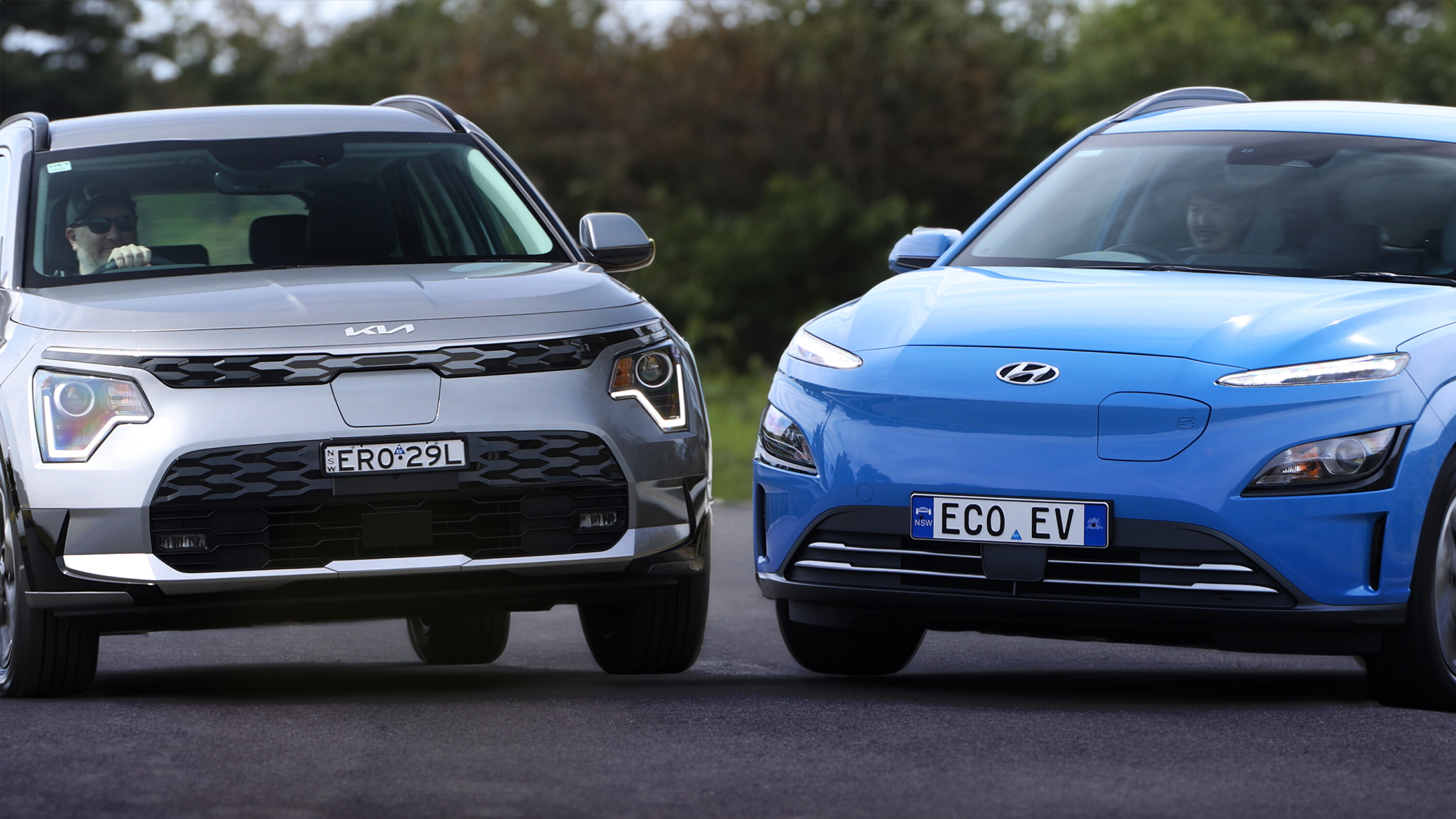
Pricing and features
Priced from $65,300 before on-road costs, the least-expensive electric Niro grants a $7290 saving over the entry-level EV6.
However, it also looks expensive when compared to similarly sized battery compact SUVs such as the BYD Atto 3 and MG ZS found below $50,000.
The Niro S’s standard equipment list looks a little sparse, too. There are relatively small 17-inch wheels and halogen rather than LED headlights. Stretching to the $72,100 (before on-road costs) GT-Line adds some pizazz with features including a Harman Kardon audio system, but this price is almost parity with the bigger (and better) EV6.
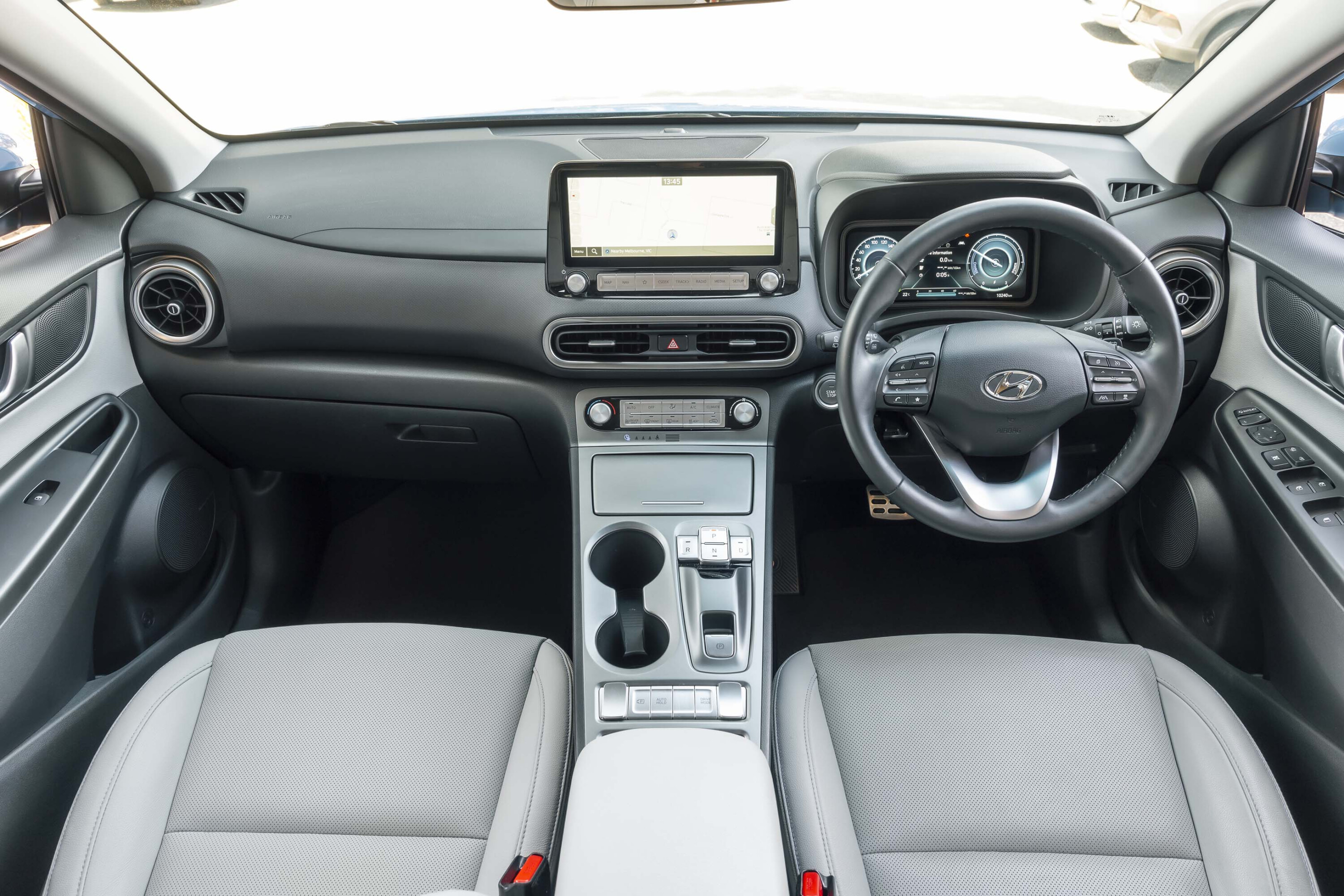
A Kona EV starts from $54,500 in Elite Standard Range form.
To get closer to the Niro S EV in terms of battery size, driving range and price we have the $60,500 Elite Extra Range (prices before on-road costs).
That additional $6K investment brings a large, 55 per cent increase in WLTP driving range: 305km to 484km.
In Elite trim, the Kona competes quite favourably for equipment. Over a Niro S, exclusives include a fully digital (10.25-inch) instrument display, Harman Kardon audio, leather-appointed seats (versus cloth/artificial leather) and privacy glass.
Kia counters with electric driver’s seat adjustment but that’s about it.
Spending another $3500 on the Hyundai accesses power driver’s seat adjustment in the Highlander variant, which seems good value as other key extras include heated/ventilated front seats, heated steering wheel, sunroof, head-up display, front parking sensors and LED headlights with auto high beam.
The latter feature should be standard on the base models of the Niro and Kona, in place of the basic halogen lamps.
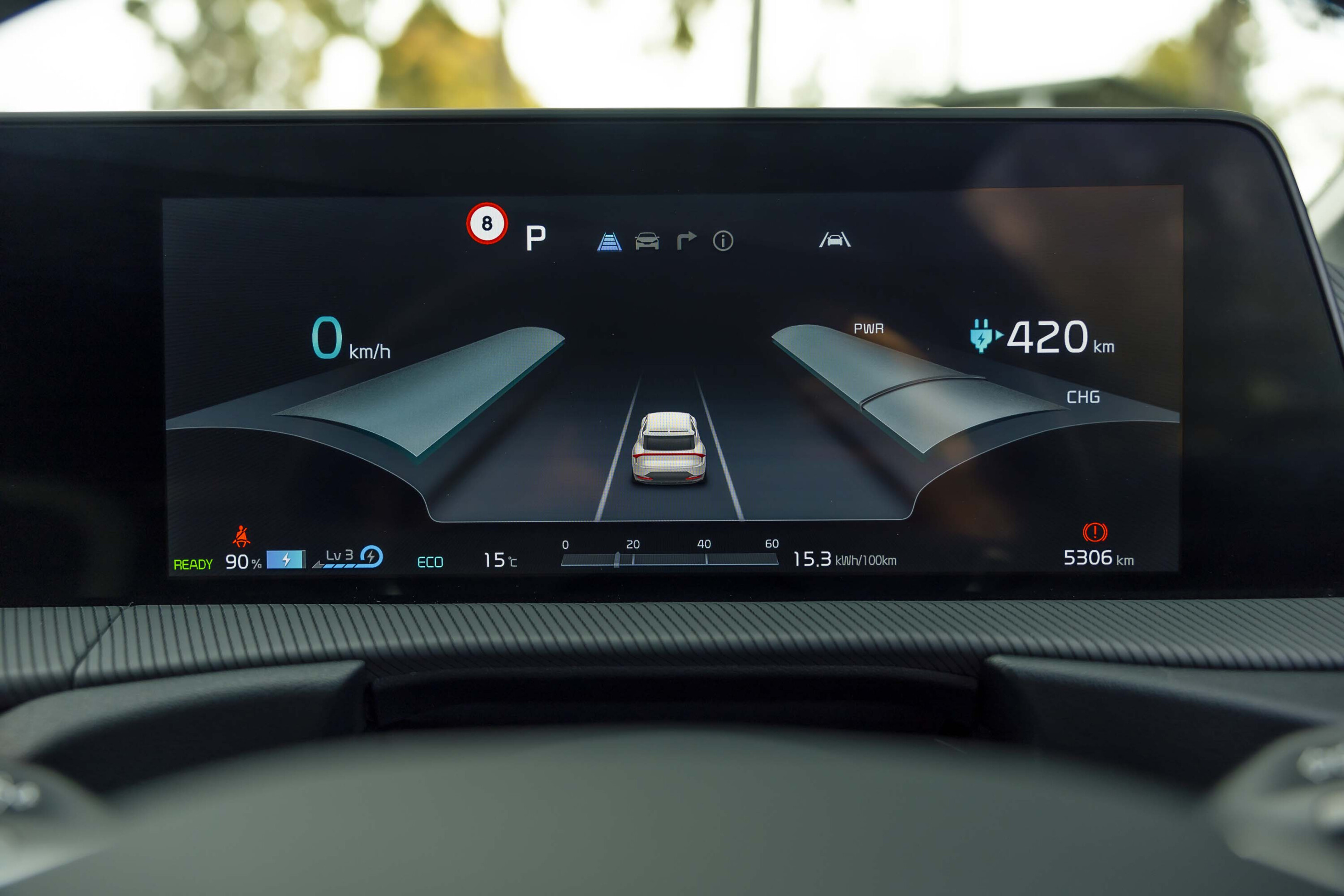
Interiors
The Niro’s interior borrows some elements from its bigger EV6 sibling, including the two-spoke steering wheel and clever touch panel with controls that can alternate between infotainment and climate settings.
Plastics are generally hard but smoother than those that have commonly featured in Kia models, and there’s a soft, textured upper dash to give quality perception a lift at eye level.
The infotainment display is less inspiring, with a small screen (yet wasted space surrounding it) and bland presentation, as well as an all-too-apparent join between this and the driver display.
Lots of blank buttons on the centre console then remind you that you’re not in the GT-Line, as does the phone tray that lacks a wireless charging function.
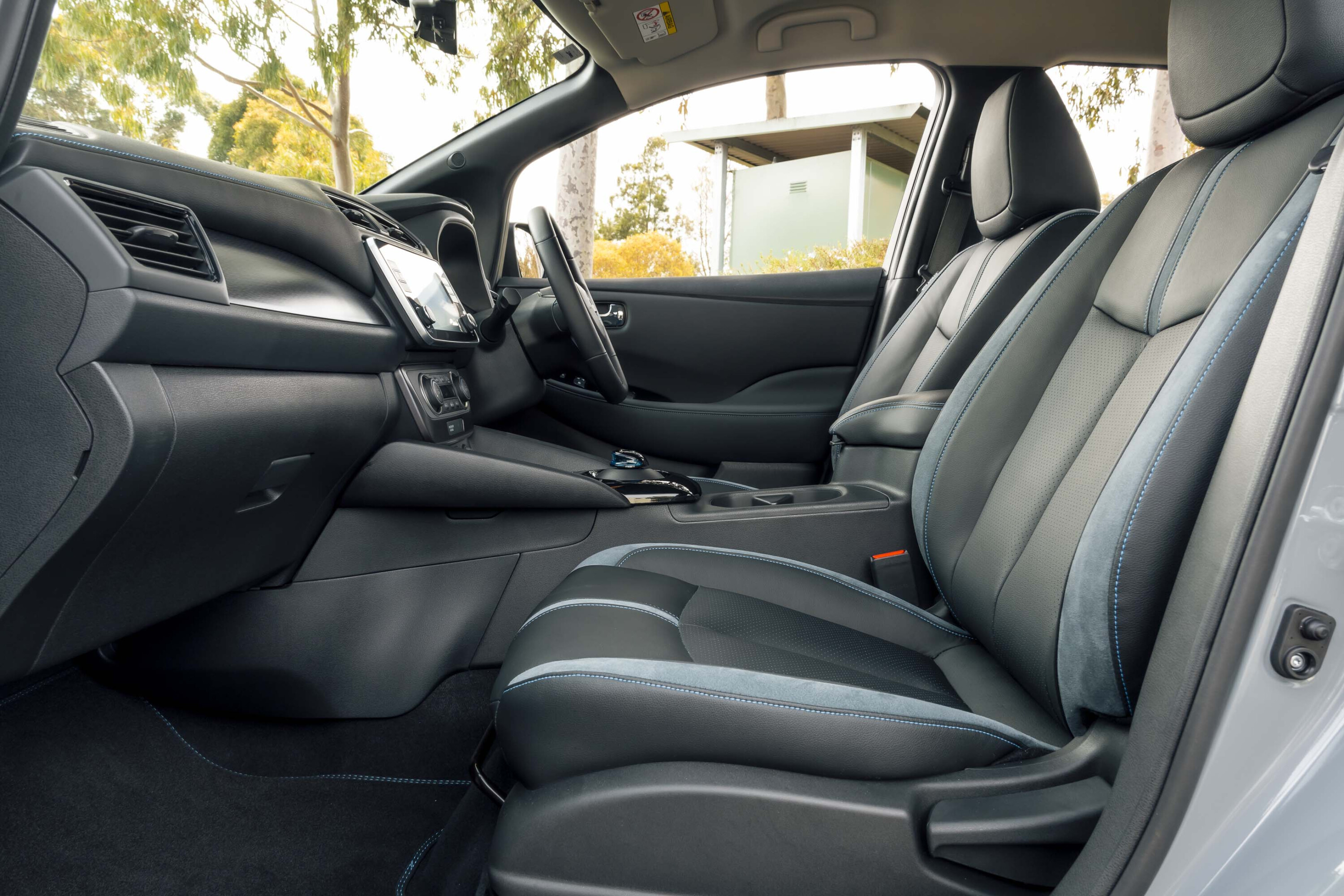
The Niro is 20cm longer than the Kona and it’s noticeable when you jump into the Hyundai.
Rear passengers get the same features regardless of variant, including vents, centre armrest, USB-C ports and even coat hangers integrated into the rear seatbacks. There’s also good legroom, though this is partly spoiled by limited toe space and the bench seat’s lacklustre under-thigh support.
A 475-litre boot is further evidence of excellent vehicle packaging, and there’s a generous underfloor section for cables and more. That means no spare wheel, of course, just a puncture repair kit.
The Niro is 20cm longer than the Kona and it’s noticeable when you jump into the Hyundai. Legroom is tight in the rear cabin, toe room is restricted, and the news doesn’t get better for adults with the absence of air vents and a bench that feels too flat.
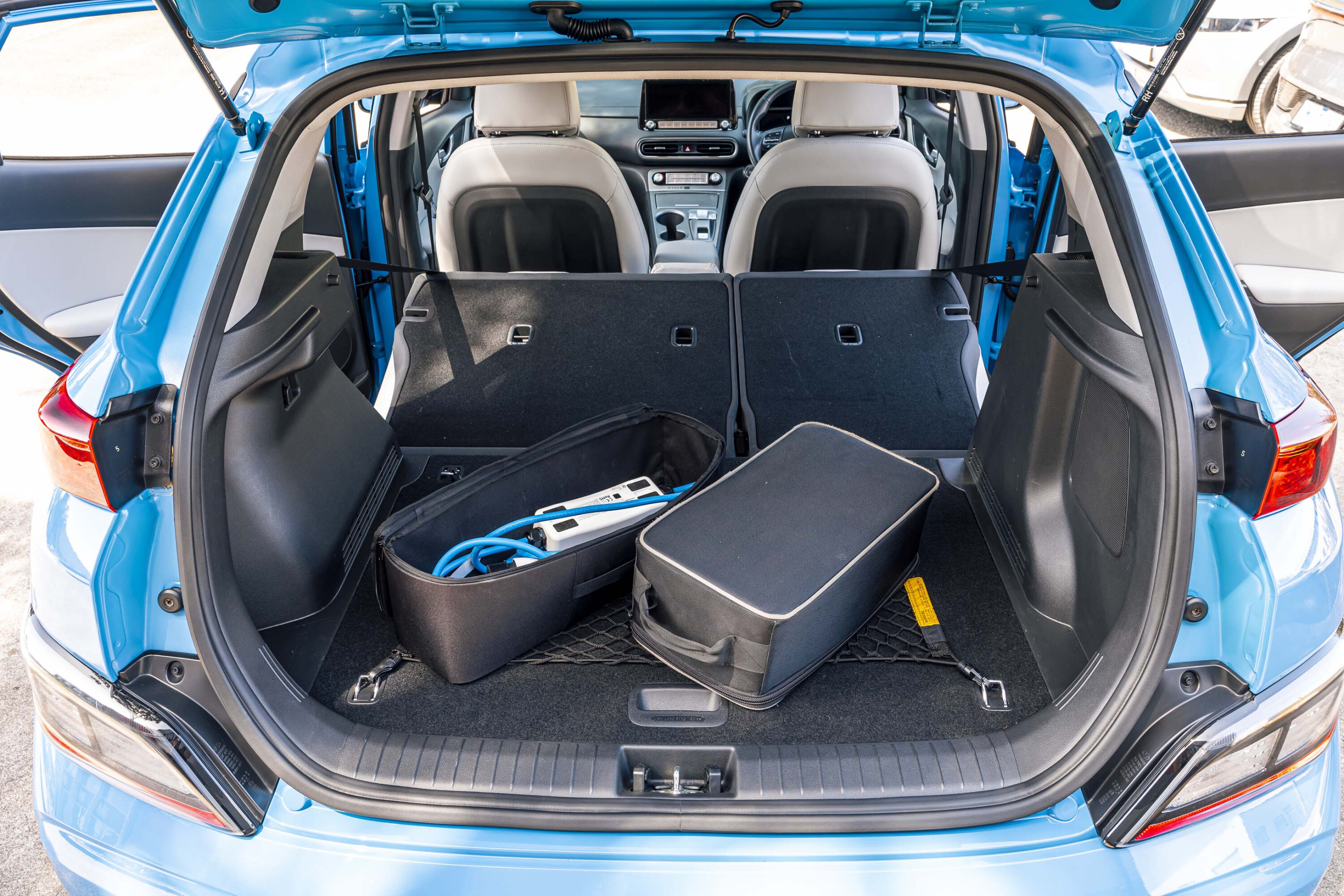
A boot capacity of 332 litres for the Kona is also well below average for a small SUV.
When the rear seats aren’t required, the 60:40 split seatbacks can be folded down though they don’t lie fully flat.
The charging cable (and bag) at least have a dedicated storage spot under the boot floor.
Seat comfort is much better up front in the individual, partially leathered pews, and it’s easy to get a good driving position even with manual adjustment.
Interior ergonomics are generally good, though the Kona’s cabin design is starting to look dated in some areas (a new-generation version is due this year).
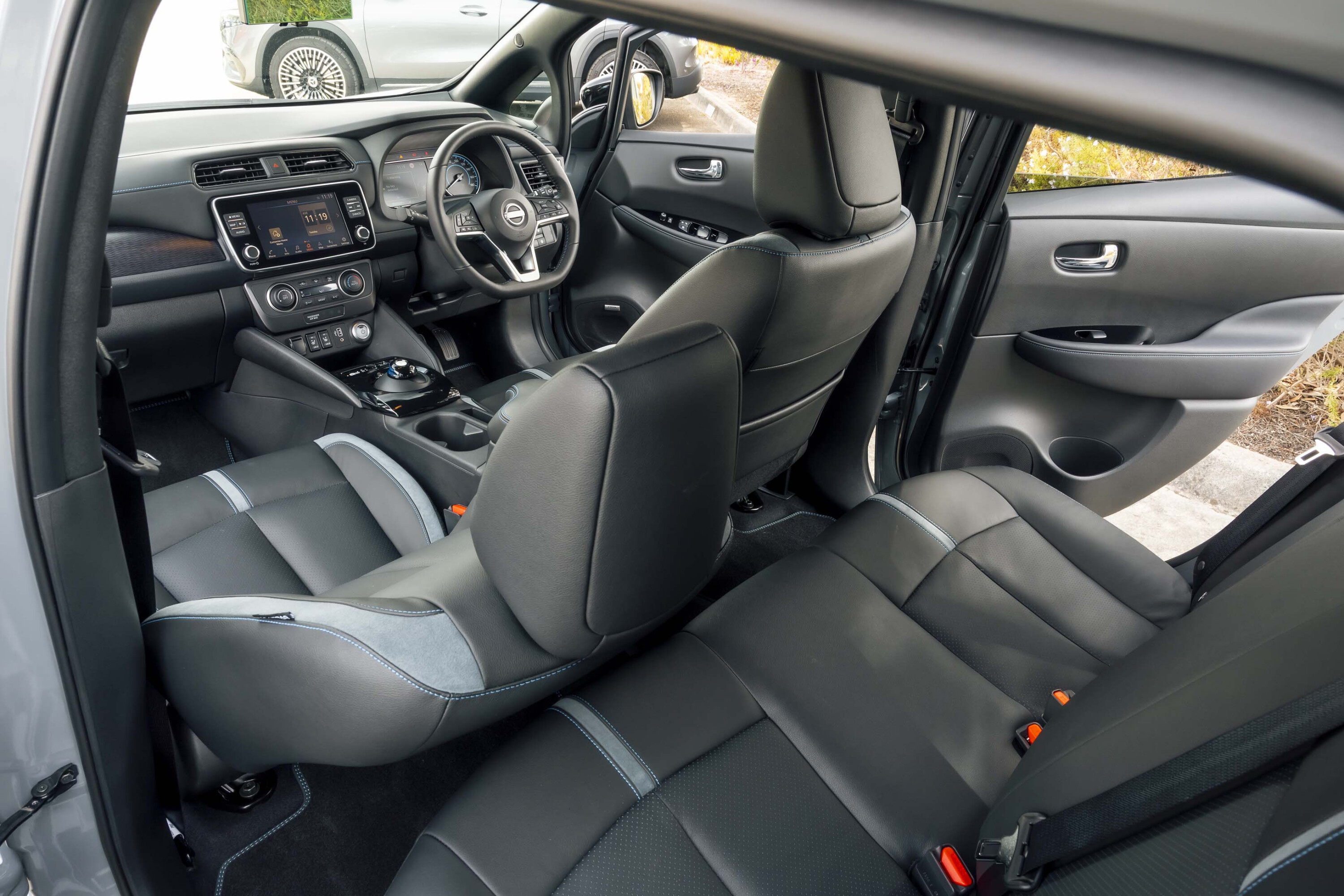
On the road
From a 200km test loop, both Korean EVs returned theoretical maximum driving ranges that were impressively close to their WLTP figures.
We calculated 458km for the Niro – within 2km of its 460km claim – and 490km for the Kona – 6km over its WLTP distance.
This is not the first time we’ve seen electric vehicles from Hyundai and Kia deliver on their on-paper promise.
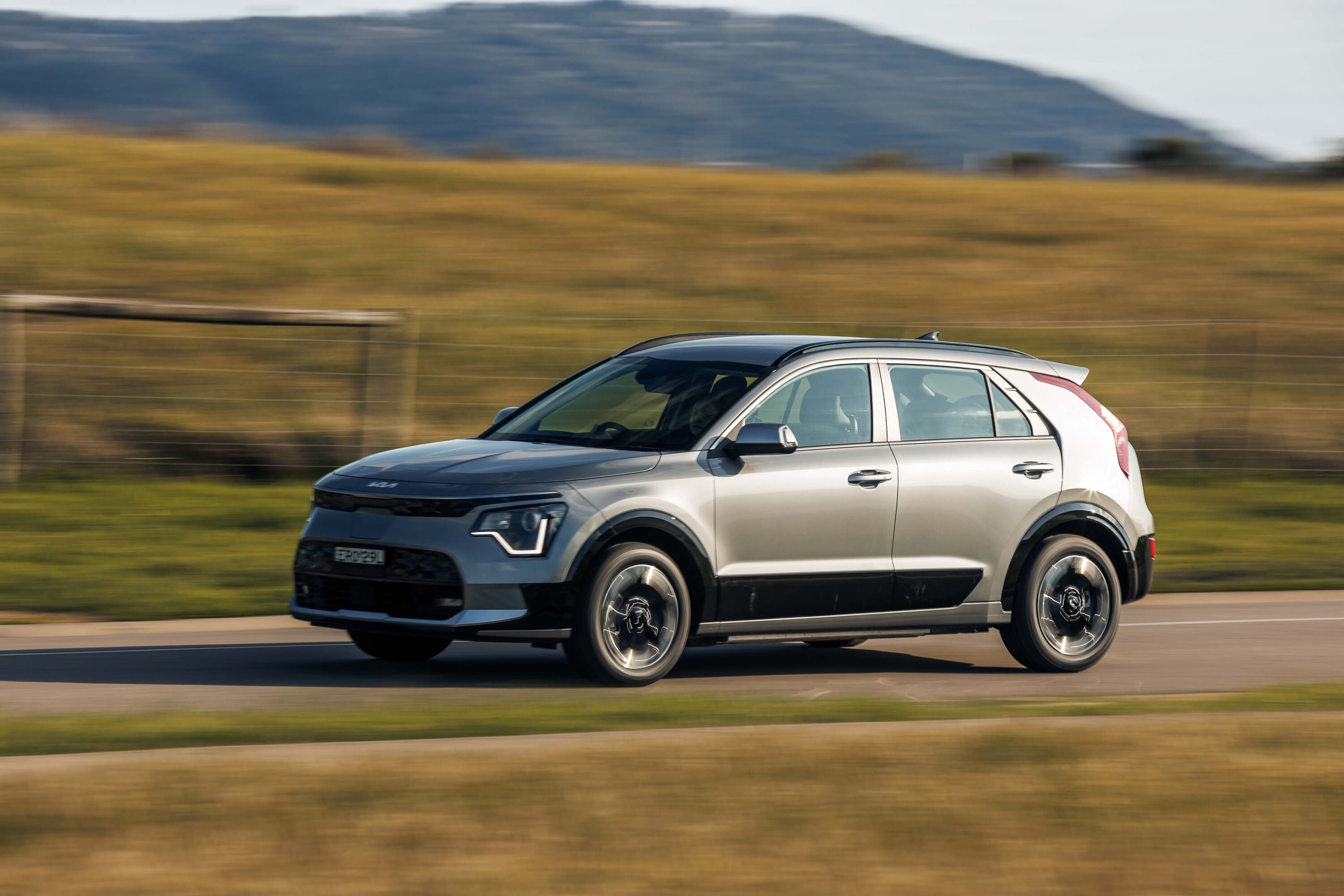
Power in the Niro is identical to the 150kW produced by the Kona EV, although torque is significantly less at 255Nm.
This doesn’t prevent the Niro from providing strong acceleration that more than compensates for its 1.7-tonne kerb weight (443kg of which belongs to the battery).
With a 7.8-second 0-100km/h claim, it’s not only much quicker than the petrol-electric Niro (10.4sec at best) but just a few tenths short of other single-motor EVs that are more expensive – such as the entry XC40 Electric, Polestar 2, and even the rear-drive EV6.
Regenerative braking is adjustable via the paddle levers and includes an i-Pedal mode that allows for one-pedal driving simply by pressing and releasing the accelerator.
Although the Niro’s power delivery is predictably smooth, the same can’t be said about its ride. The EV shares the Niro Hybrid’s tendency to be easily irritated by less-than-perfect bitumen despite the small wheels and chubby rubber.
The Niro feels stiff-legged compared with the Kona, as well as BYD’s Atto 3.
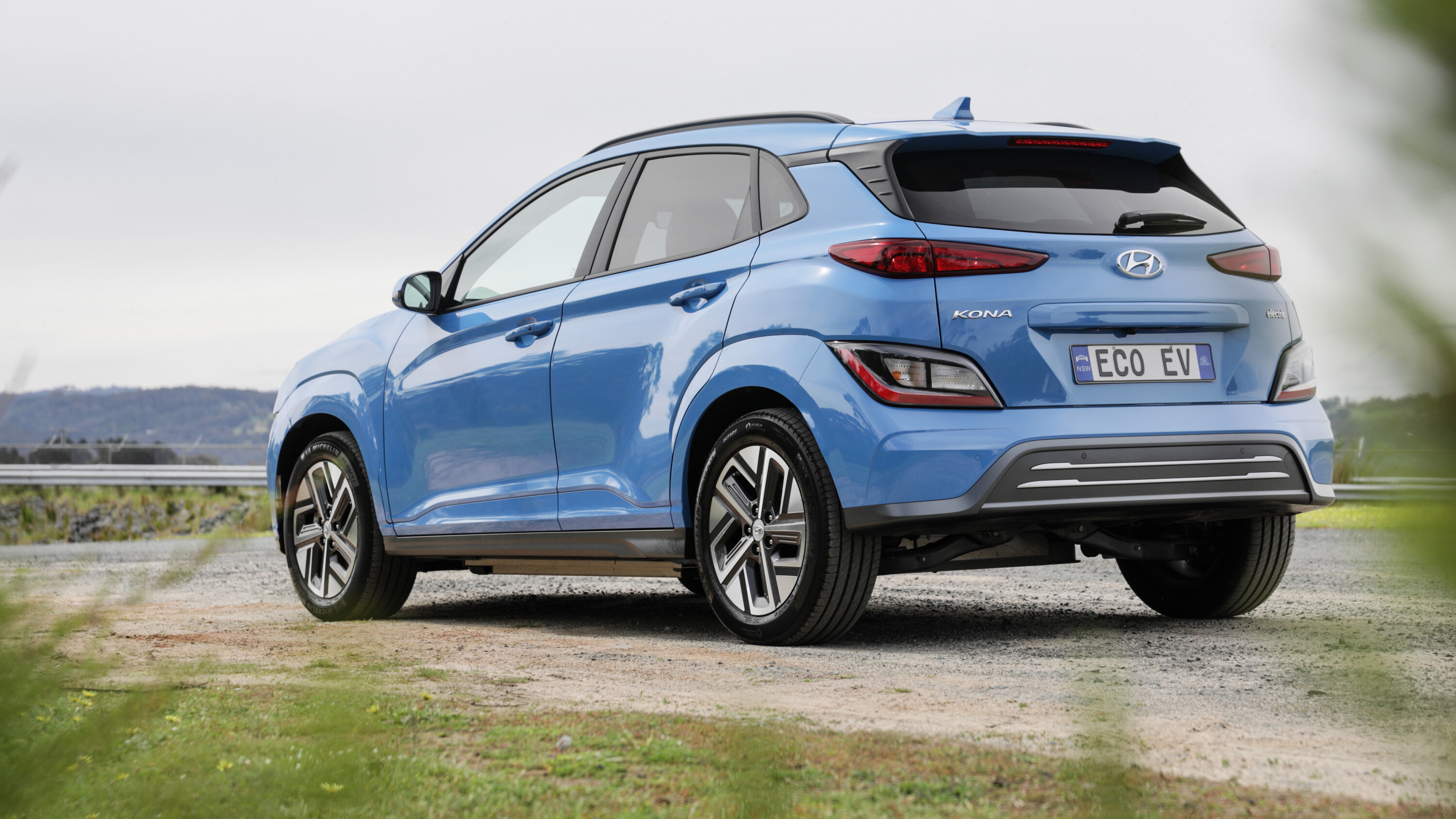
Inconsistent steering also partly blights the Niro driving experience, with heavier electric assistance noticeable just off-centre before lightening (and improving) as more lock is applied.
The Niro surprised on the twistiest part of our 200km test loop, with a willingness to be thrown into corners and, aided by plentiful tyre grip, giving the driver the ability to tighten the Kia’s nose simply by lifting off the accelerator pedal, using strong regen braking to manage entry speed rather than the brake pedal.
It’s commendable, even if nobody is likely to buy a Niro EV as a pseudo hot hatch.
The keenest of drivers should pick a Kona with an N badge, though the Kona Electric still provides an element of fun for buyers prioritising recharging over refuelling.
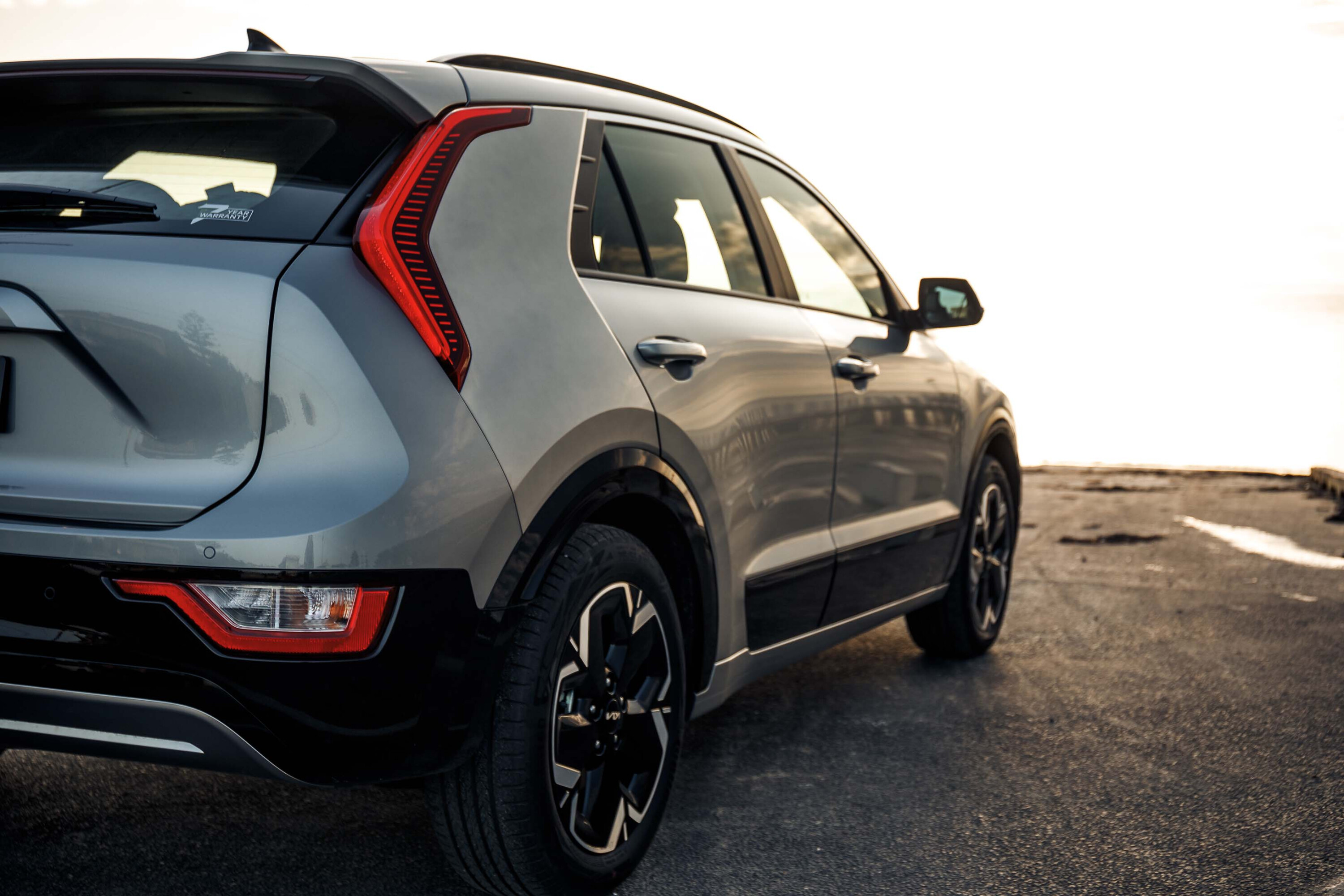
As with the Niro, the electric Kona shrugs off its 1.7-tonne kerb weight with sprightly performance off the mark. No lag – simply immediate response to a squeeze of the throttle pedal.
Hyundai doesn’t provide an official figure for the Kona Electric’s acceleration but it feels similar to the Niro, if not slightly quicker.
The Hyundai’s dynamics are competent rather than involving but more importantly for most buyers, the Kona provides a consistently comfortable ride and consistently smoother steering that gives it an everyday-driving advantage over its compatriot.
One-pedal driving is also available via adjustable regen braking.
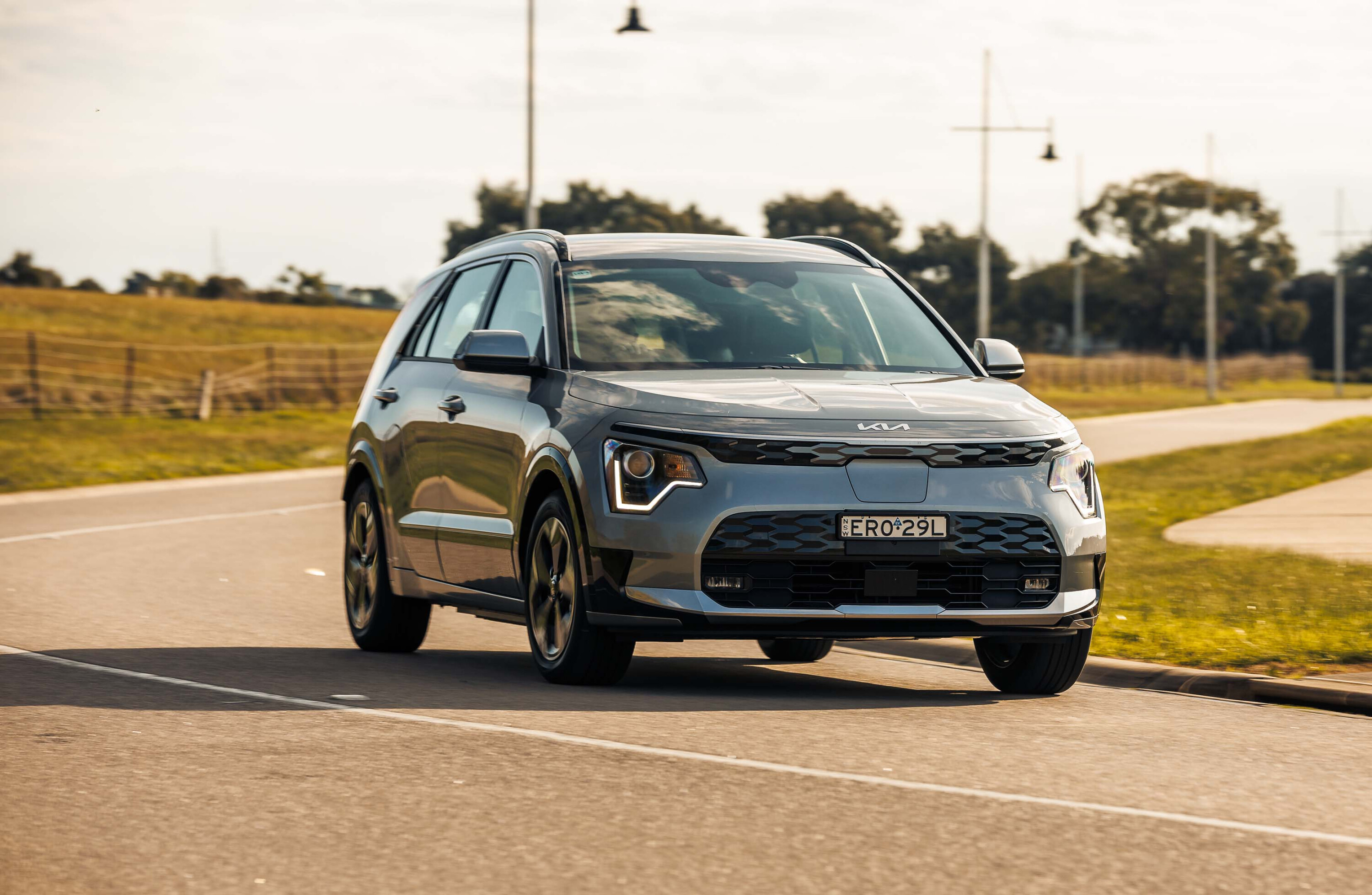
VERDICT
Hyundai’s Kona EV isn’t as practical, but it gets our nod
For the Kia option, you should beg, borrow or steal – okay, we can’t condone the latter! – to stretch to a base Kia EV6 over the Niro. If it’s just too much, then the Niro at least offers excellent interior space for its more compact size.
Hyundai’s Kona EV isn’t as practical, but it gets our nod for its slightly longer range, better features, and more comfortable ride.
However, a new Kona EV is due in the last quarter of 2023 – bringing an increase in vehicle size and battery range.
SCORING
Hyundai Kona EV: 7.5/10
| THINGS WE LIKE | NOT SO MUCH |
|---|---|
| Real-world range | Tight rear seat |
| Sprightly performance | Small boot |
| Good on-road manners | Expensive for a small SUV |
Kia Niro EV: 7/10
| THINGS WE LIKE | NOT SO MUCH |
|---|---|
| Spacious interior with improved presentation | Priced too close to EV6 |
| Good performance plus one-pedal driving | Standard equipment level a bit lacklustre |
| 7-year warranty | Inconsistent steeringu00a0 |
| Fidgety ride unless roads are smooth |
| Hyundai Kona Electric Elite Extra Range | Kia Niro EV S | |
|---|---|---|
| Safety, value and features | 7 | 6.5 |
| Comfort and space | 7 | 8 |
| Drivetrain | 8 | 8 |
| Ride and handling | 8.5 | 7 |
| Technology | 7.5 | 7 |
| OVERALL | 7.5 | 7 |
| Price | $60,500 + on-road costs | $65,300 + on-road costs | ||
|---|---|---|---|---|
| Size & segment | Small SUV | Small SUV | ||
| Seats | 5 | 5 | ||
| Boot space min/max | 332L/1114L | 475L/1329L | ||
| Drive | Single motor, front-wheel drive | Single motor, front-wheel drive | ||
| Battery size | 64.0kWh | 64.8kWh | ||
| Outputs | 150kW/395Nm | 150kW/255Nm | ||
| Efficiency | 14.7kWh/100km | 16.2kWh/100km claimed, 13.9kWh/100km tested | ||
| Driving range | Claimed | Tested | Claimed | Tested |
| 486km | 490km | 460km | 458km | |
| Charging speed | Claimed | Tested | Claimed | Tested |
| DC fast charging | 77kW, 10-100% 47min | 24kW avg, 61-100% 51min | 80kW, 10-80% 43min | 28kW avg, 61-100% 59min |
| AC home charging | 7.2kW, 10-100% 9h15min | Not tested | 11kW, 10-80% 6h20 min | Not tested |
We recommend
-
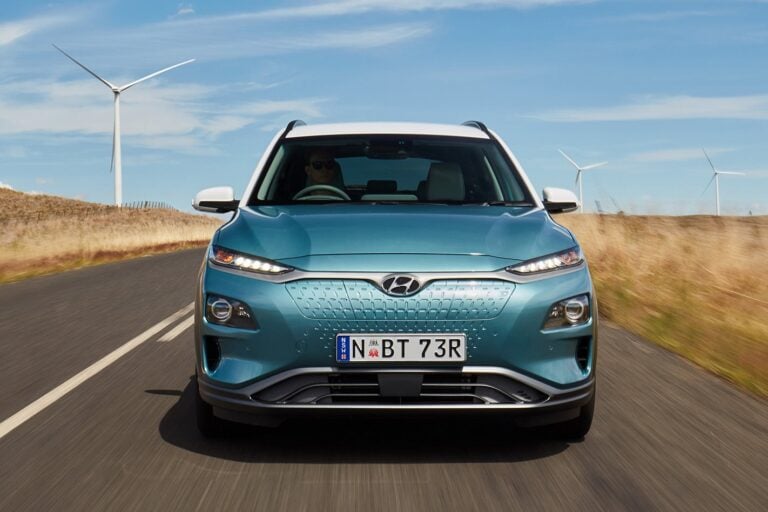 News
News2019 Hyundai Kona EV pricing and features
You’ll need deep pockets for Hyundai’s electric SUV, but its single-charge range is huge
-
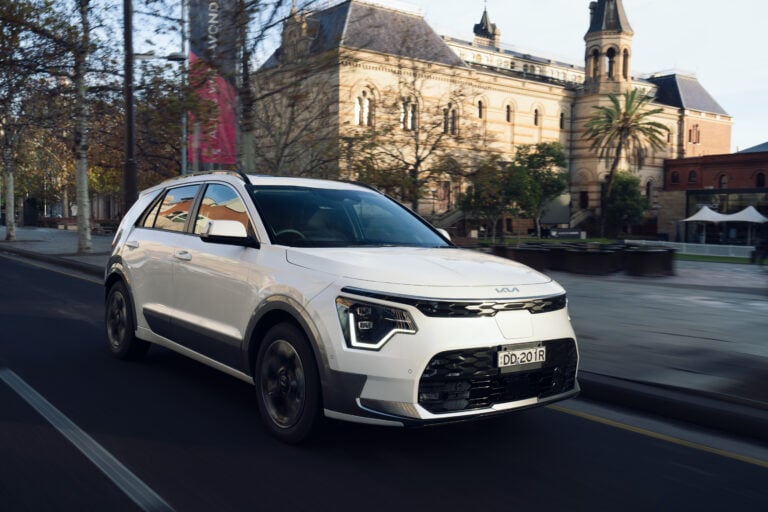 News
News2023 Kia Niro pricing and features for Australia
The second-generation Niro has landed with the choice of hybrid or all-electric power, at a price similar to the ground-up EV6
-
 News
NewsNew car calendar 2026: All the new cars coming to Australia next year
Here’s the WhichCar by Wheels guide to all the new cars that will launch in Australia in 2026. Check back in regularly for updates...




